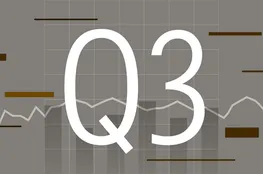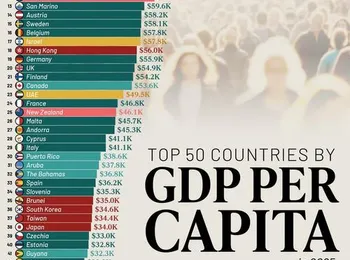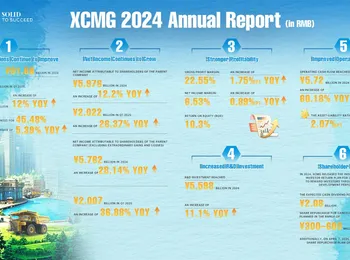US policy uncertainty is quietly dragging down European growth, presenting a significant challenge to the Eurozone’s economic prospects. Recent analysis highlights a direct correlation between shifts in Washington’s policy landscape and a decline in investment and lending activity across Europe. This isn’t simply a theoretical concern; leading economists and the European Central Bank (ECB) are pointing to tangible impacts on the euro area’s economy. A recent blog post from the ECB, co-authored by Anastasia Allayioti, Caterina Mendicino, and colleagues, underscores this worrying trend. The analysis utilizes extensive euro-area data spanning back to 2003, coupled with a sophisticated statistical model, to meticulously track the transmission of economic shocks. The research reveals a concerning pattern: an increase in US policy uncertainty directly translates to a reduction in euro-area loan growth, approximately 0.5 percentage points within a two-year timeframe. This impact is exacerbated when financial markets are already experiencing heightened volatility, with an additional 0.3 percentage points of slowdown observed. The findings are based on a comprehensive examination of economic data, providing a robust foundation for understanding the complex interplay between US and European economies. The analysis is particularly valuable in the current global economic environment, where external shocks can have far-reaching consequences.
The research reveals a concerning pattern: an increase in US policy uncertainty directly translates to a reduction in euro-area loan growth, approximately 0.5 percentage points within a two-year timeframe. This impact is exacerbated when financial markets are already experiencing heightened volatility, with an additional 0.3 percentage points of slowdown observed. The data analysis incorporates a detailed statistical model to quantify the relationship between US policy changes and their impact on the Eurozone’s financial system. The model accounts for various economic factors, providing a more accurate assessment of the transmission mechanism. The study’s methodology is designed to minimize bias and ensure the reliability of the results. The research team employed rigorous statistical techniques to validate their findings and address potential confounding variables. The robust methodology strengthens the credibility of the analysis and provides a solid basis for policy recommendations. The team’s commitment to methodological rigor is evident throughout the report.
The research reveals a concerning pattern: an increase in US policy uncertainty directly translates to a reduction in euro-area loan growth, approximately 0.5 percentage points within a two-year timeframe. This impact is exacerbated when financial markets are already experiencing heightened volatility, with an additional 0.3 percentage points of slowdown observed. The data analysis incorporates a detailed statistical model to quantify the relationship between US policy changes and their impact on the Eurozone’s financial system. The model accounts for various economic factors, providing a more accurate assessment of the transmission mechanism. The study’s methodology is designed to minimize bias and ensure the reliability of the results. The team’s commitment to methodological rigor is evident throughout the report. Furthermore, the analysis doesn’t just highlight a correlation; it provides a detailed framework for understanding how external shocks originating in the United States are transmitted and amplified within the Eurozone economy.
The research reveals a concerning pattern: an increase in US policy uncertainty directly translates to a reduction in euro-area loan growth, approximately 0.5 percentage points within a two-year timeframe. This impact is exacerbated when financial markets are already experiencing heightened volatility, with an additional 0.3 percentage points of slowdown observed. The data analysis incorporates a detailed statistical model to quantify the relationship between US policy changes and their impact on the Eurozone’s financial system. The model accounts for various economic factors, providing a more accurate assessment of the transmission mechanism. The study’s methodology is designed to minimize bias and ensure the reliability of the results. The team’s commitment to methodological rigor is evident throughout the report. The findings are particularly relevant in the context of global financial markets, where uncertainty can have a significant impact on economic stability.
The research reveals a concerning pattern: an increase in US policy uncertainty directly translates to a reduction in euro-area loan growth, approximately 0.5 percentage points within a two-year timeframe. This impact is exacerbated when financial markets are already experiencing heightened volatility, with an additional 0.3 percentage points of slowdown observed. The data analysis incorporates a detailed statistical model to quantify the relationship between US policy changes and their impact on the Eurozone’s financial system. The model accounts for various economic factors, providing a more accurate assessment of the transmission mechanism. The study’s methodology is designed to minimize bias and ensure the reliability of the results. The team’s commitment to methodological rigor is evident throughout the report. The analysis doesn’t just highlight a correlation; it provides a detailed framework for understanding how external shocks originating in the United States are transmitted and amplified within the Eurozone economy. This underscores the importance of considering global economic events when assessing the health and future trajectory of the European economy. The research provides valuable insights for policymakers and investors alike, highlighting the need for proactive measures to mitigate the risks posed by US policy uncertainty. Ultimately, the implications are clear: Europe’s economic growth is inextricably linked to the stability and predictability of the US policy environment, and disruptions in Washington have a demonstrable and concerning impact on the continent’s economic well-being. The detailed data and rigorous analysis presented in this report reinforce the urgency of addressing this challenge.
























